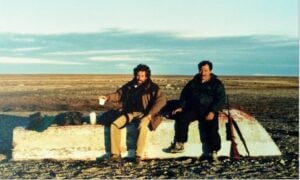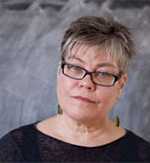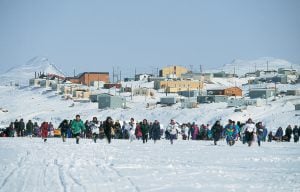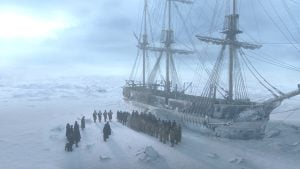I remember walking with him across the southern edge of his island during that multi-day expedition with the Inuit teens, following, as he said, in the footsteps of Franklin’s dead men. It was as if he could still feel their spirits, restless on the land and maybe malevolent.
We were staying in unbleached canvas tents, sleeping on muskox skins. A lot of what we ate was country food — wind-dried fish, fresh-caught fish, caribou. But Kamookak’s pride and joy was a massive jar of Cheez Whiz, which he slathered over homemade fried bannock, carefully handing the jar around so others could share in the unaccustomed treat.
He was fiercely, shyly proud of the fact that the students were interested enough to spend time with him on the land. He would recount the tales in a nearly incantatory tone, word for word, the same every time, offering up his wisdom as a gift to the next generation, but never forcing it on people. A born teacher.
It was that gentleness that I’ll remember best. And the wit. A short while after our expedition I saw him at a Royal Canadian Geographical Society event in Ottawa. I was to introduce him and I asked him, nervously, whether he had brought any notes. He looked at me carefully for a moment, resplendent in his seal skin vest, then said, slyly: “Alanna, I’m an oral historian,” while a huge grin spread across his face.







